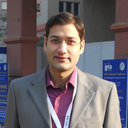Mechanisms of acute myocardial infarction study (MAMIS).
关键词
抽象
Acute myocardial infarction (AMI) is a highly dynamic event, which is associated with marked neuroendocrinological dysfunction in addition to cardiac damage. The immediate trigger for AMI is not precisely known. Studies conducted by Lown, Braunwald, Halberg, Otsuka and our group have demonstrated a marked increase in sympathetic activity, oxidative stress, and magnesium and potassium deficiency during AMI. Clinical studies have reported an increased incidence of AMI, sudden death and ischemia during first quarter of the day when there is a rapid withdrawal of vagal activity and increase in sympathetic tone. In one case-control study of 202 patients with AMI, there was a significant (P < 0.02) increase in cardiac events in the second quarter of the day compared to other quarters, respectively (16.8%, 41.0%, 13.8%, 28.2% per quarter). This characteristic remained prevalent in both men and women and among patients with and without known AMI (n = 52), diabetes (n = 53) or hypertension (n = 75). Triggers of AMI were noted among 162 (82.2%) of the patients. Neuropsychological mechanisms were observed as follows: emotional stress (45.5%), sleep deprivation (27.7%), cold climate (29.2%), hot climate (24.7%), large meals (47.5%) and physical exertion (31.2%). These triggering factors are known to enhance sympathetic activity and decrease vagal tone, resulting in an increased secretion of plasma cortisol, noradrenaline, aldosterone, angiotension-converting enzyme (ACE), interleukin (IL)-1, -2, -6, -18, and tumor necrosis factor-alpha (TNF-alpha), all of which are are proinflammatory agents. There is also a deficiency in the serum levels of vitamin A, E, and C and magnesium, potassium, melatonin, and IL-10 (an anti-inflammatory agent). In our study, we found a decrease in magnesium, potassium, vitamin A, E, C and beta carotene combined with an increase in thiobarbituric acid-reactive substances (TBARS), MDA and diene conjugates, TNF-alpha and IL-6, all of which are indicators of oxidative damage and proinflammatory activity, respectively.



